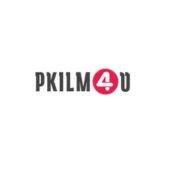Understanding the Difference Between Formal and Informal Communication

Introduction
Communication is the cornerstone of effective interaction in both personal and professional settings. It plays a crucial role in the transmission of information, ideas, and emotions. Two primary types of communication are formal and informal, each serving distinct purposes and adhering to different conventions. This article delves into the difference between formal and informal communication, exploring their characteristics, uses, and the impact they have on interactions.
What is Formal Communication?
Formal communication refers to structured, official communication that follows established protocols and conventions. It is typically used in professional settings and is characterized by a set format, clear language, and adherence to specific rules.
Characteristics of Formal Communication
-
Structured Format: Formal communication often follows a set format or template, such as reports, memos, or business letters. This structure ensures clarity and consistency.
-
Professional Language: The language used in formal communication is precise and formal. It avoids slang and colloquialisms, maintaining a professional tone.
-
Official Channels: Formal communication usually occurs through official channels such as organizational email, meetings, or documented correspondence. It is often recorded and archived for future reference.
-
Purpose and Content: The content of formal communication is typically related to business operations, policies, or official announcements. It is designed to convey information clearly and authoritatively.
Examples of Formal Communication
-
Business Reports: Detailed documents that provide information on business performance, projects, or financial status.
-
Official Memos: Internal communications used to convey information within an organization.
-
Emails to Clients: Professional correspondence with clients or stakeholders that adhere to formal language and structure.
What is Informal Communication?
Informal communication, on the other hand, is more casual and spontaneous. It often occurs in less structured settings and does not follow strict rules or formats.
Characteristics of Informal Communication
-
Casual Tone: Informal communication employs a relaxed and conversational tone. It may include slang, idiomatic expressions, and casual language.
-
Spontaneity: This type of communication often happens spontaneously, without a predefined format or structure. It can occur through various channels such as face-to-face conversations, text messages, or social media.
-
Personal Interaction: Informal communication is typically more personal and direct, fostering a sense of familiarity and ease among individuals.
-
Flexible Content: The content of informal communication is often varied and can include personal anecdotes, jokes, or informal updates. It is less focused on delivering specific information.
Examples of Informal Communication
-
Casual Conversations: Chatting with colleagues or friends about non-work-related topics.
-
Text Messages: Short, informal messages exchanged between individuals, often with a conversational tone.
-
Social Media Posts: Informal updates or interactions on platforms like Facebook, Twitter, or Instagram.
Key Differences Between Formal and Informal Communication
-
Structure and Format: Formal communication follows a structured format, while informal communication is more flexible and spontaneous.
-
Language and Tone: Formal communication uses precise and professional language, whereas informal communication is characterized by a casual tone and everyday language.
-
Purpose: The purpose of formal communication is often to convey official information or directives, while informal communication focuses on personal interaction and casual updates.
-
Channels: Formal communication occurs through official channels like emails and reports, whereas informal communication takes place through personal interactions and social media.
Impact on Interactions
The choice between formal and informal communication can significantly affect interactions. Formal communication is essential for maintaining professionalism and ensuring clarity in business contexts. It helps in creating official records and providing structured information.
In contrast, informal communication fosters relationships and creates a more relaxed atmosphere. It can enhance teamwork and build rapport among individuals. However, over-reliance on informal communication in professional settings may lead to misunderstandings or a lack of clarity.
Conclusion
Understanding the differences between formal and informal communication is crucial for effective interaction in various settings. Each type serves distinct purposes and has its own set of characteristics. By recognizing when and how to use formal and informal communication, individuals can navigate their interactions more effectively and achieve their communication goals.
- Art
- Causes
- Crafts
- Dance
- Drinks
- Film
- Fitness
- Food
- Jeux
- Gardening
- Health
- Domicile
- Literature
- Music
- Networking
- Autre
- Party
- Religion
- Shopping
- Sports
- Theater
- Wellness


